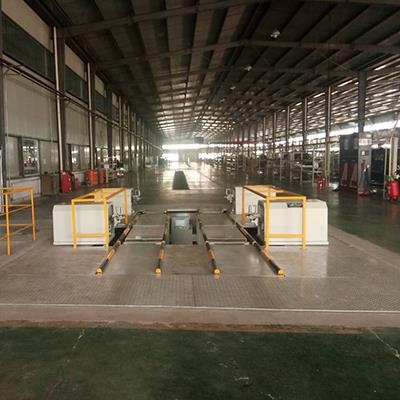The advantages of through-type 4-wheel alignment are as follows:
Tire benefits
Since it is called 4-wheel alignment, it must be very beneficial to the tires. After 4-wheel alignment, the tires and the car body can maintain a stable angle, which improves the grip and ensures comfort. Of course, if the car does not have 4-wheel alignment when an abnormal situation occurs, it will not only have a greater impact on the safety factor, but also greatly reduce the life of the tires. The price of a tire generally ranges from a few hundred to a few thousand yuan. If you do not take care of the tires, you will lose a lot of money.
Improved control
Keeping the tires in normal condition is of course very helpful for safe driving. After positioning and adjusting the tires with a through-type 4-wheel alignment instrument, driving maneuverability can be guaranteed accordingly. Especially in an emergency, the tires have sufficient grip to allow the vehicle to follow the driver's driving trajectory as much as possible. Although this is only an emergency, driving itself is dangerous. If you can make corresponding judgments when danger is about to come, your safety will be fully guaranteed.

Fuel saving
It is self-evident that fuel consumption will decrease as the rolling friction coefficient of the tire decreases. After adjusting the four-wheel alignment, the car can run along the correct track, reducing wind resistance to a certain extent, and of course fuel consumption will also be reduced. Combined with the standard tire pressure value, the tire can not only maintain a stable grip effect, but also minimize the friction between the tire and the ground, achieving a multi-pronged effect.
Safety precautions
Good tires mean good cars, and the safety factor will also be greatly improved. In fact, while adjusting the four-wheel alignment, the maintenance technician will also check the condition of the car's suspension system and other components. This kind of inspection can determine whether the tires have a negative impact on the chassis system. If an abnormality is found, not only will the tires be optimized, but the chassis will also be repaired accordingly. In this way, the degree of wear of the corresponding components can be judged by the tires, and potential safety hazards can be discovered as early as possible and completely eliminated.
Related News
- How does the dynamic four wheel aligner avoid communication interference?
- Introduction to vehicle electrical inspection
- How to choose a good pass four wheel aligner
- What is the assembly line
- The important role of the through four wheel aligner
- The four main points of 3D laser four wheel aligner maintenance
- Working principle of electric chassis dynamometer
- Vehicle off-line comprehensive diagnostic equipment
- How to choose a good dynamic four wheel aligner
- Precautions for selecting a non-contact four-wheel aligner
- Introduction to the main components of the comprehensive drum test bench (2)
- What is the difference between a static 4-wheel alignment instrument in a repair shop and a dynamic surface measurement 4-wheel alignment instrument in a car factory?
- Analysis of relevant matters of 3D laser 4-wheel alignment
- Analysis of the principles and advantages of 3D laser 4-wheel alignment
- 3D laser 4 wheel alignment installation and maintenance matters
- Introduction to some misunderstandings in 4-wheel alignment
- What aspects should be considered when choosing a 3D laser 4-wheel aligner
- Innovation of non-contact 4-wheel aligner
- The manufacturer of through-type 4-wheel alignment instrument shares the main detection methods of 4-wheel alignment instrument
- What is the relationship between the through-type 4-wheel alignment and the deviation of the car?
